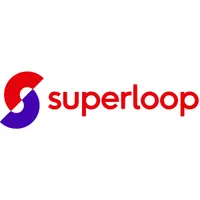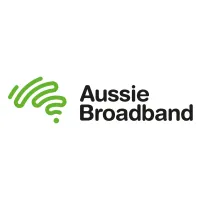Best NBN 250 plans: the cheapest, fastest and best overall options

The best NBN 250 plans have recently advanced to a new level — that being the NBN 750 tier.
Before September 14, 2025, most 'superfast' plans advertised a theoretical maximum of 250Mbps during busy evening hours, and were exclusively available to customers with FTTP and HFC connections.
However, post-NBN Co's speed boost rollout, NBN 250 plans are being phased out with new 750Mbps plans replacing them, with 3x more speed and at no extra cost to customers. However, some of our top-rated providers, like Superloop, have held on to 250Mbps plans and boosted their upload speeds to a massive 100Mbps.
That said, most remaining plans on this tier reach maximum speeds of 250Mbps; however, some reach a maximum of 200Mbps during busy evening hours. If you find a plan advertising typical evening speeds of around 240Mbps, we'd recommend it, as a 10Mbps difference is unlikely to have as much of a real-world effect as a 50Mbps difference between 250Mbps and 200Mbps.
We’ve taken speed differences, hidden fees and more into account, as we round up the best NBN 250 plans currently available below. If you’re looking for more ways to save on your monthly internet bill, you can check out our cheap NBN plans guide, too.
Best NBN 250 plans
Superloop | AU$85p/m (for 6 months, then AU$99p/m)
Superloop has already introduced a 750Mbps tier; however, the provider has retained this high-upload 250Mbps plan, now at an enticingly low cost of AU$85p/m.
The plan now has supercharged upload speeds of 100Mbps, which is 4x the typical speeds for the tier, and still comes with the theoretical maximum speeds of 250Mbps during the evening hours.
You can also boost your speeds to ultrafast heights if you like, by using the five free Speed Boost days every month.
Total minimum cost: AU$85 | Total first year cost: AU$1,104 | Yearly cost after discount: AU$1,188
Aussie Broadband | AU$89p/m using code 20BF (for 6 months, then AU$109p/m)
Arguably, this is a more premium-priced plan than Superloop's above, but with slim pickings for the 250Mbps tier, Aussie Broadband's plan deserves a spot on this list.
Not only does it advertise 250Mbps, but it also claims a massive 89Mbps uploads, which is more than enough speed for 9+ users. Plus, ABB is highly rated among gamers and streamers alike, so if you don't quite need all the megabits but still want a reliably fast plan, this one is worth considering.
Total minimum cost: AU$85 | Total first year cost: AU$$1,188 | Total yearly cost: AU$1,188
NBN 250 FAQs
How fast is NBN 250?
NBN 250 plans offer a maximum download speed of 250Mbps. Most NBN providers in Australia advertise maximum speeds; however, some claim anywhere from 200Mbps up to 245Mbps.
This tier has recently received a 3x wholesale speed boost to a massive 750Mbps at no extra cost to providers. We anticipate that the current 250Mbps offers will be phased out in the coming months in favour of the faster speed plans.
Can I get NBN 250?
Not everyone in Australia will be able to sign up for an NBN 250 plan. In order to access the superfast speeds, you will need to have either a fibre-to-the-premises (FTTP) or hybrid fibre coaxial (HFC) connection type at your property.
However, you will need to pay close attention to which connection(s) each individual internet service provider supports, as some will only support a 250Mbps plan on an FTTP connection, but not HFC.
That said, all NBN 250 plans have received a wholesale speed boost to the new NBN 750 tier, which offers 3x more speed at no additional cost. If you haven't been contacted by your provider about the upgrade, it may be worth following up to see your migration options and whether your plan has been automatically boosted to 750Mbps.
How much is an NBN 250 plan?
According to our research, the average monthly cost of an NBN 250 plan is AU$107.17 per month. The cheapest NBN 250 plan still available comes from Superloop, with prices starting at AU$85p/m.
That said, the NBN 750 tier averages AU$107.15p/m, and most providers are price-matching existing 250Mbps plans. In this case, it may be worth upgrading to 750Mbps, especially if it comes at no extra cost to your monthly bill.
Get instant access to breaking news, the hottest reviews, great deals and helpful tips.

Lucy Scotting is a digital content writer for Tom’s Guide in Australia, primarily covering NBN and internet-related news. Lucy started her career writing for HR and staffing industry publications, with articles covering emerging tech, business and finance. In her spare time, Lucy can be found watching sci-fi movies, working on her dystopian fiction novel or hanging out with her dog, Fletcher.
- Max LangridgeSenior Editor, Tom's Guide AU


